Last Updated on August 7, 2025
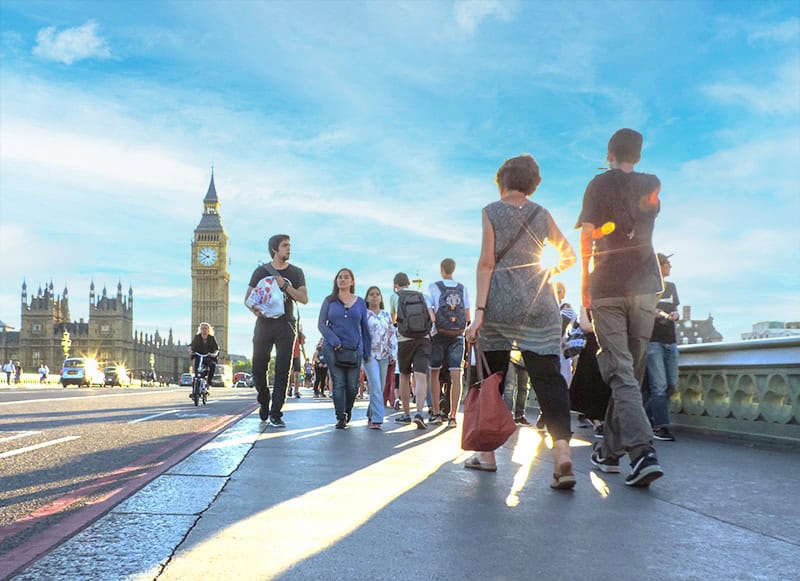
Walks in London are walks through history…and you never know what you’ll uncover.
Estimated reading time: 14 minutes
By Jim Ferri
Walks in London are among the best anywhere in the world. What makes them so attractive is the variety of things you find in the British capital.
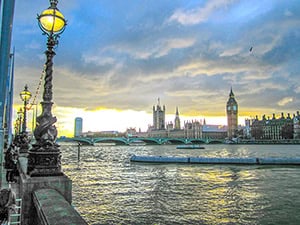
London is a layer cake of history, 2,000 years of it, going back to the Romans (and earlier). You’ll find dazzling ancient and modern architecture, fantastic museums, and incredible pageantry. With great shopping. And hotels and restaurants for every budget. There’s also great theater and too many historical landmarks to see, even on a multi-week stay.
Not surprisingly, many of the areas of Metropolitan London are chockablock with places you’ve likely heard about all your life. You can easily reach all of them via the city’s vast Underground network. Take the Tube to each station below to set off on each London walk. The best walks include Royal London, Bloomsbury, The City, Covent Garden, Trafalgar, Westminster, Kensington & Knightsbridge.
First, however, you need a good map of London showing the Underground stations. You’ll find many good (and inexpensive) maps here. The laminated Michelin maps are excellent since they stand up to rough use and London’s rain. You can also write on them and wipe them off.
Due to time constraints, the following walks are not all-inclusive; they only touch the main sights in each area.
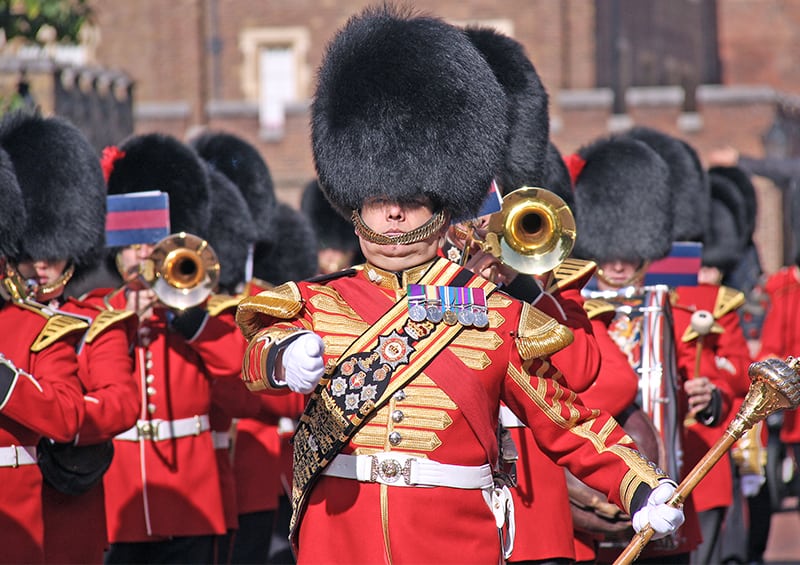
A Walking Tour of Royal London
(Station: Charing Cross)
Exit Charing Cross station and walk through Trafalgar Square to Whitehall. Then, turn left and see the famous Horse Guards, the Household Cavalry. Enter the courtyard by the Horse Guard and walk through to the parade ground. Turn onto Horse Guards Road and walk to The Mall, which is about 3 minutes. Turn left on The Mall and walk through St. James Park to Buckingham Palace.
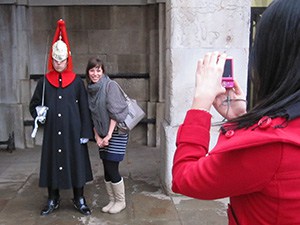
About halfway to Buckingham, you’ll pass St. James’s Palace, a Tudor Royal residence, on your right on Marlborough Road. The luxury food store and Royal Purveyors, Fortnum & Mason, is a 5-minute walk in Piccadilly. Make time for it sometime during your London visit. It’s a must-see.
Any London walking tour should certainly include Buckingham Palace. View the Changing of the Guard at 11:30am daily (from August – April, every other day in good weather). Public tours of the State Rooms of Buckingham occur from late July through the end of September. From March to October, you can also visit the Royal Mews to see the coaches, cars, and carriages collection. Guided tours depart hourly from 10:00-16:00.
Kensington Palace, the former home of Princess Diana, is a 45-minute walk further on through vast Hyde Park. After a tour, stop for a bite or tea in the baroque Orangery in Kensington Gardens, adjacent to the palace.
Two other sites in Royal London, the Tower of London and Tower Bridge, are further away and best seen on a London walking tour of The City (below).
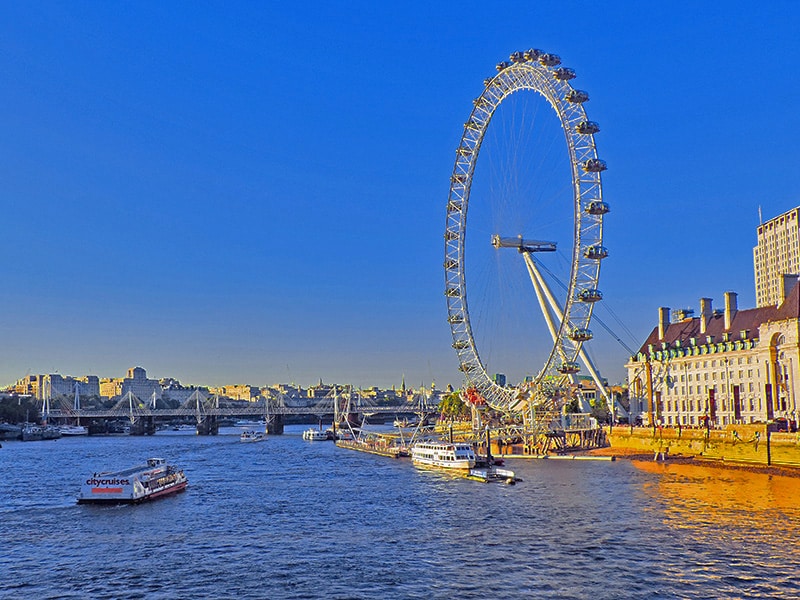
Walk About Westminster and Along the Thames
(Station: Westminster)
In addition to royalty, nothing epitomizes London more than Big Ben and the Houses of Parliament. But after you exit the Tube at Westminster, head first for the historic Churchill War Rooms, just a few blocks away. You’ll find it astounding. (10 Downing Street is five minutes further.)
When you leave the War Rooms, head back and tour Westminster Abbey, just a few minutes walk away. After leaving the Abbey, admire the Parliament building (guided tours on Saturdays throughout the year and most weekdays when Parliament is not in session) and Big Ben.
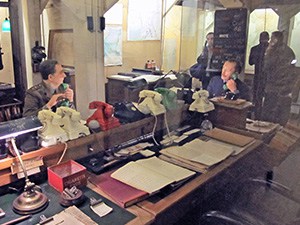
Now, cross over the Thames on Westminster Bridge. On the far bank, turn left and walk to the London Eye (now officially the Coca-Cola London Eye). Depending on the time of day, the line for the London Eye could be long – but it is well worth the wait. You can also get tickets in advance (recommended).
After the Eye, continue down the Thames past Royal Festival Hall (Friday–Sunday, there’s an excellent street food market behind it) to the Tate Modern. It’s about a one-mile walk.
Tate Modern showcases international modern art. (Tate Britain is on the north side of the river south of Parliament, about an hour’s walk. It’s home to a collection of British art dating back to 1500.)
Adjacent to the Tate is Shakespeare’s Globe, a recreation of an Elizabethan Theatre. Due to London’s weather, performances are only given part of the year.
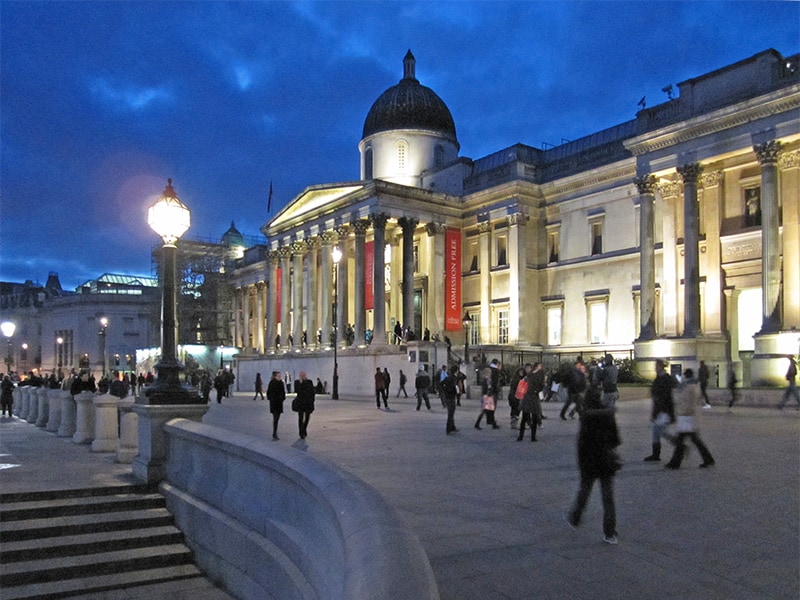
A London Walking Tour of Trafalgar Square
(Station: Charing Cross)
After exiting the station, walk south on the Strand to the Equestrian Statue of Charles I, which is less than a five-minute walk. Trafalgar Square, the hub of London’s West End, the theater and nightlife capital of the city, will be on your right. It’s dominated by Nelson’s Column, a tribute to Britain’s great naval officer.
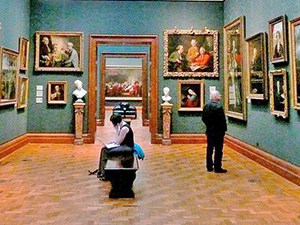
On the far side of Trafalgar is Britain’s famous National Gallery, home to one of the most significant art collections in the world (free admission). Its collection contains over 2,300 cavasses ranging from the early Renaissance to Impressionism.
The National Portrait Gallery is in the same building (although not part of the National Gallery). It’s a fascinating place to connect faces with famous people you read about in World History class.
When you exit the National Gallery, to your left, you’ll see St. Martin-in-the-Fields, a church renowned for its music events, including free lunchtime concerts.
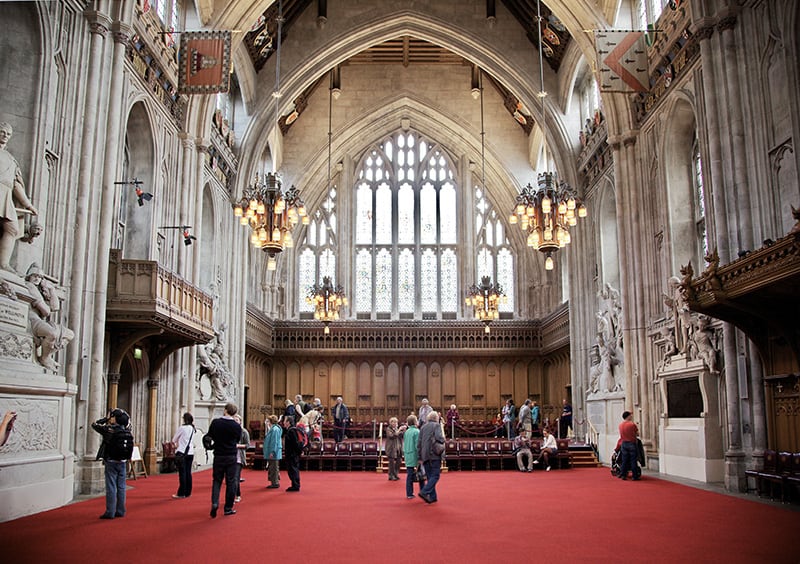
Wandering About The City
(Station: Tower Hill)
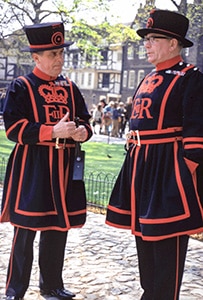
The area of London, known simply as “The City,” is an ancient square mile north of the Thames. Following the old Roman walls, it’s the center of London’s financial district and home to the Stock Exchange and the Bank of England. Here, modern skyscrapers tower above medieval alleyways.
When you exit the Tube, head to the Tower of London, which is actually outside the City historic district. Originally built for William the Conqueror, it was where Henry VIII had two of his wives put to death. Today, it’s home to the Crown Jewels.
Certainly tour the Tower, see the jewels, meet Yeoman Warders, and admire Tower Bridge spanning the Thames below.
From the Tower, walk northward to see “The Gherkin” (30 St. Mary Axe), the affectionately named pickle-looking skyscraper next to Lloyd’s of London. On the other hand, you can walk along Lower Thames Street to “the monument,” which marks the Great Fire of London in 1666. Its height is the exact distance to the bakery on Pudding Lane, where the conflagration began. Each walk is 10-15 minutes.
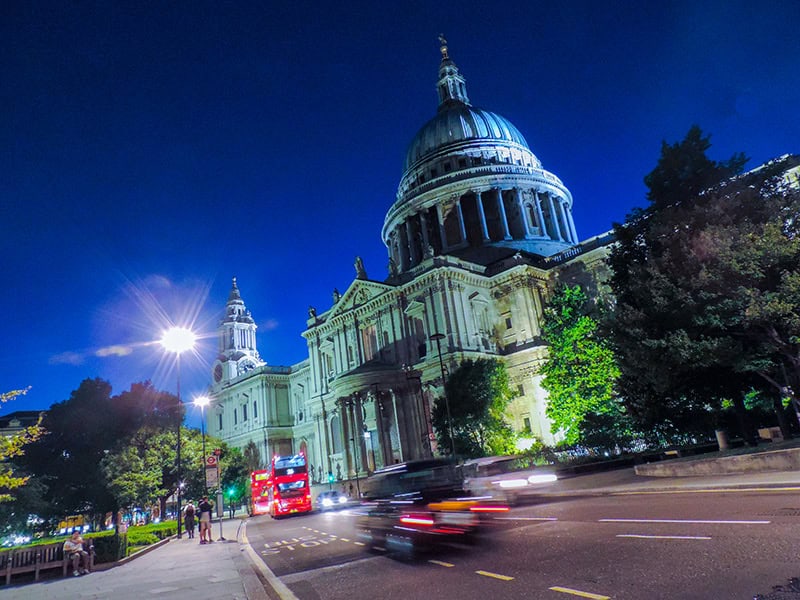
St. Paul’s and More
From either, it’s a 10-minute walk to the Bank of England and its interesting museum and a five-minute walk to the medieval Guildhall. For more than 900 years, the Guildhall was London’s administrative center. Visit it’sits beautiful 15th-century Great Hall, hung with banners, where ceremonies are still held. The remains of a Roman amphitheater are nearby.
The fascinating Museum of London at (150 London Wall) is less than a 10-minute walk from the bank. Near it is the Barbican Centre, London’s music, theater, dance, film, and arts complex.
From the Barbican, walk 15 minutes to beautiful St. Paul’s Cathedral, built by Christopher Wren. Its interior is magnificent, and the Cathedral is similar to Rome’s St. Peters in some respects.
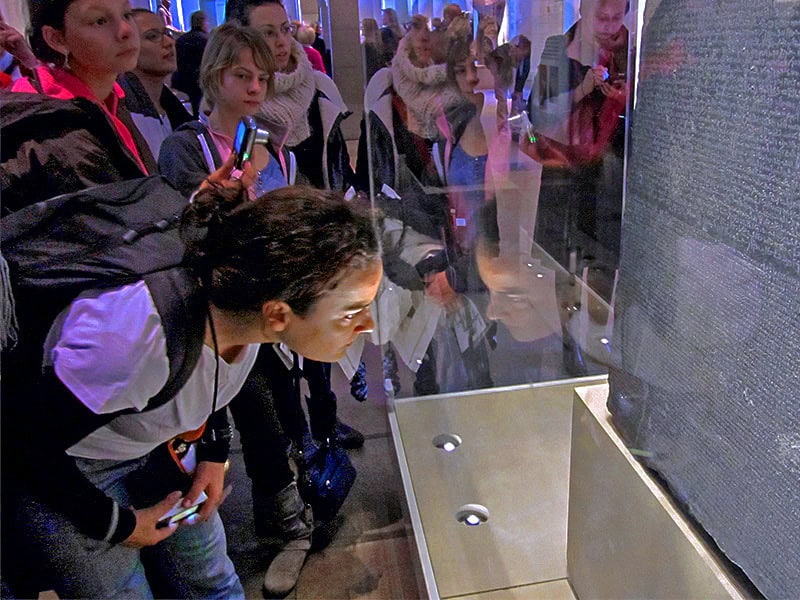
Discovering Bloomsbury and Fitzrovia on Foot
(Station: Russell Square Station)
Tube Note: You can also use the Tottenham Court Road Metro Station to reach the British Museum. I like Russell better since I enjoy strolling through Russell Square Park.
On a London walking tour, you don’t want to miss Bloomsbury, London’s literary and scholarly heart. Here, you’ll find the world-famous British Museum, the British Library, Sir John Soane’s Museum, the Charles Dickens Museum, the Pollocks Toy Museum, and more.
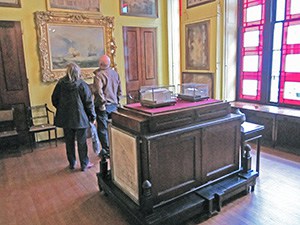
Start your walking tour at the British Museum, the oldest museum in the world. It has 6 million items in its collection, so obviously, you can’t see them all. But you’ll likely want to see the Rosetta Stone, the Elgin Marbles, the mummies (including the Mummified Cat), and much more. It’s overwhelming and incredibly interesting.
If you have time, certainly see the Sir John Soane’s Museum, a 10-minute walk south at 13 Lincoln’s Inn Fields. A leading British architect, Soane crammed three adjoining houses with nearly 45,000 objects. The house has been left untouched since his death over 180 years ago. It’s amazing. I found it incredible and look forward to returning.
East of the British Museum, a 15-minute walk will take you to the Charles Dickens Museum. It was the Victorian author’s home when he wrote Oliver Twist, Nicholas Nickleby, and The Pickwick Papers.
A Toy Museum, A Bookshop, An Incredible Library
A 10-minute walk northwest of the British Museum will bring you to the privately owned Pollock’s Toy Museum and Shop (1 Scala Street), a little museum filled with old-fashioned toys. (Note: it’s not meant for small children.)
Bibliophiles may want to make two stops. One is the Jarndyce Antiquarian Bookshop, right across the street from the British Museum.
The other is the British Library, whose collection includes everything published in Britain and international historical publications. It’s adjacent to St. Pancras Station, a beautiful piece of Victorian architecture.
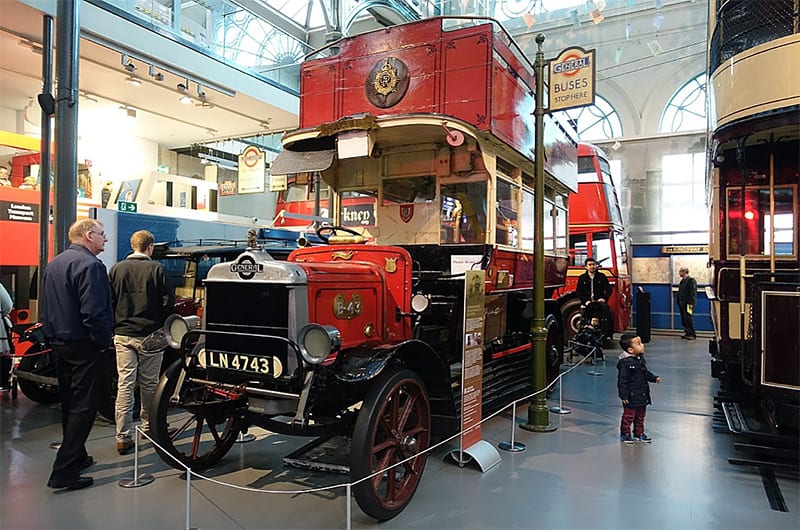
Walking About Covent Garden
(Station: Covent Garden)
Covent Garden is London’s first planned square. It’s also one of the liveliest places in the city, with a lot to see in a relatively small area.
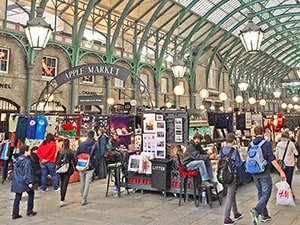
This vegetable and flower market has retained its My Fair Lady atmosphere for many years. Today, you’ll still find vegetable and flower purveyors, luxury shops, and upscale restaurants catering to the theater crowd.
The Royal Opera House, home to the Royal Opera and Royal Ballet, is adjacent to the Piazza. The historic Theatre Royal is nearby on Drury Lane.
The London Transport Museum, with its collection of more than 400,000 items, is also adjacent. It includes a bevy of buses, locomotives, and everything else related to London Transport.
Walk a few blocks over, across Strand, and you’ll find Somerset House. A former riverside palace, it once housed Britain’s Navy Board. Today, though, it’s home to Britain’s Civil Service. It also houses the world-renowned Courtauld Institute of Art, founded to study European Art.
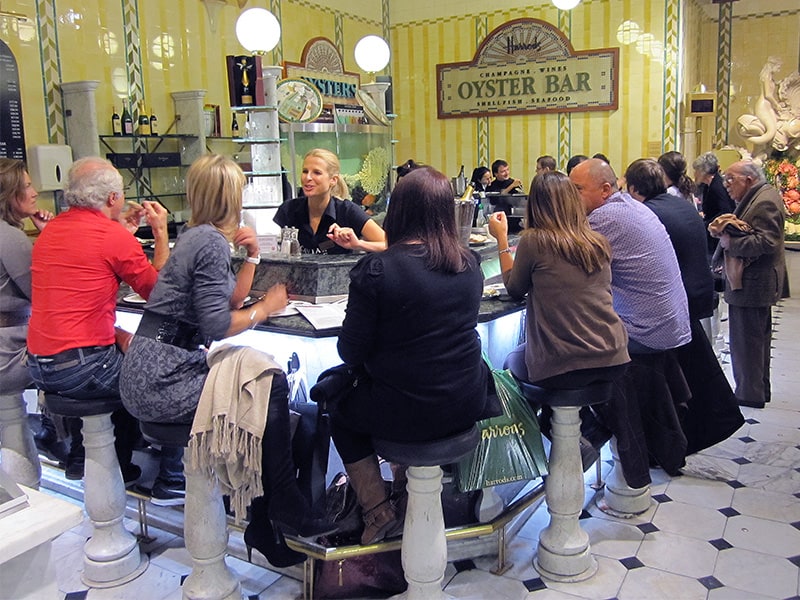
Through Kensington & Knightsbridge
(Station: South Kensington)
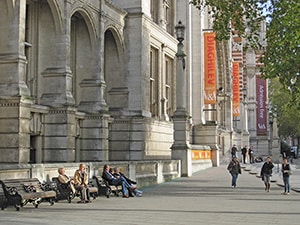
Although they are two separate neighborhoods, I think of Kensington and Knightsbridge almost as one since they are so entwined. A warning, however – you can easily spend several days here.
When you exit the South Kensington Tube, walk five minutes north to Cromwell Road, where you’ll find museum heaven. Almost abutting one another are the Victoria & Albert Museum, the National History Museum, and the Science Museum. All are spectacular in their own right.
On the six floors of the V&A, as it’s known, you’ll find an incredible treasure house of fine and applied arts from around the world. The British Gallery alone has 3,000+ items of British art.
It’s best to get a museum map at each of these three museums and ask for recommendations as to what to see. Also, on the exterior of the building, look for the World War II bomb damage intentionally left unrepaired.
You may also enjoy: London’s Museum Quarter / Best Things to Do in London in Winter (or Any Time of Year) / London’s West End, Still a Delight
Across the street, continue your London walk with a visit to the Natural History Museum. It’s the repository of specimens brought back home by Charles Darwin and other scientists. Today, more than 70 million items are in the museum’s collections. Again, scream for help at the front desk.
Natural History Museum and Harrods
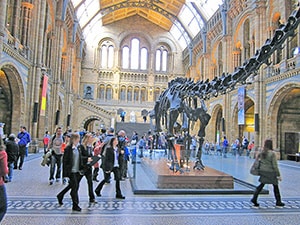
You’ll find the Science Museum adjacent to the Natural History Museum. It’s a hands-on museum that is quite interesting and fun. It’s home to everything from the world’s oldest surviving steam locomotive (“Puffing Billy”) to the Apollo 10 Command Module. You know what to do at the front desk.
From the V&A, continue up Brompton Road to the nearby Brompton Oratory. Make a quick stop to see its incredible Italianate interior. Then, continue to Harrods, about a leisurely half-hour walk up Brompton.
No London walk would be complete without a visit to Harrods, which claims to have been “at the pinnacle of luxury retail for over 160 years.” Harrods is to shopping what the V & A is to art: if you haven’t been to either, you’ll likely be overwhelmed. Nevertheless, it’s a place to experience even if you’ve left your credit cards in the hotel.
Have a meal or drink in one of its 20 restaurants and bars for a real treat. And, as might be expected, there is afternoon tea…
Just be aware that Harrods has a dress code and will refuse entry to anyone wearing attire it considers inappropriate. Also barred are “visible tattoos and clothing that contain objectionable language or designs…” Read the rules here.

Your wonderful guide to London was akin to actually being there. I can’t believe all the famous sites I missed with many right before my eyes. No doubt, I will return… soon.
I’m glad you enjoyed it Ed. You can never go to London too many times.
Thank you so much for your in depth articles. I lived in England back in the 70s and have visited several times but missed many of the places you describe in this piece. Can’t wait to return to this marvelous city.
PS: If you have a guide to Portugal I would love to read it.
Hi Mary, I don’t have a “guide” to Portugal but I’ve written several articles about Lisbon and Coimbra that you may enjoy. Thank you for the kind words.